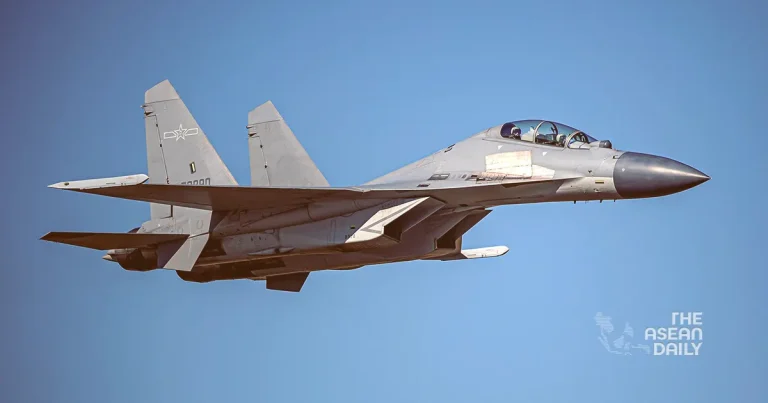13-8-2024 (MANILA) The Philippines has lodged a formal diplomatic protest against China following a perilous aerial encounter over the disputed Scarborough Shoal in the South China Sea. The incident, which occurred on Thursday, saw Chinese fighter jets flying dangerously close to a Philippine Air Force patrol plane and firing flares in its path, marking a significant escalation in the ongoing maritime dispute between the two nations.
Philippine military chief General Romeo Brawner Jr described the Chinese actions as “very dangerous”, emphasising the potential for catastrophic consequences. “If the flares had come into contact with our aircraft, they could have been blown into the propeller or the intake, or burned our plane,” Brawner stated, underscoring the gravity of the situation.
The encounter, involving a Philippine NC-212i light transport plane, represents the first such aerial confrontation since tensions between Beijing and Manila began to escalate in the region last year. Department of Foreign Affairs spokesperson Teresita Daza confirmed that a diplomatic protest had been transmitted to China, though details of the communiqué were not disclosed.
Philippine President Ferdinand Marcos Jr did not mince words in his condemnation of the incident, describing the Chinese air force jets’ actions as “unjustified, illegal and reckless”. The Philippine government’s task force overseeing the South China Sea issued a stern rebuke, calling on China to “cease all forms of provocative and hazardous acts” that could jeopardise the safety of Filipino personnel and destabilise regional peace.
Despite the alarming encounter, Philippine authorities have vowed to intensify their monitoring of the contested airspace, signalling a resolute stance in the face of perceived Chinese aggression.
The Chinese People’s Liberation Army’s Southern Theater Command offered a contrasting narrative, accusing the Philippine aircraft of “illegally” entering airspace above the shoal during combat training activities. The command asserted that it had deployed jets and ships to identify, track, and drive away the Philippine aircraft, warning Manila to “stop its infringement, provocation, distortion and hyping-up”.
This incident is not isolated, as the United States, Australia, and Canada have reported similar encounters with Chinese aircraft in the South China Sea. These nations have deployed forces to the region to promote freedom of navigation and overflight, actions that China has criticised as threats to regional security.
The South China Sea remains a hotbed of territorial disputes, with Brunei, Malaysia, Vietnam, and Thailand also laying claim to portions of this strategically crucial waterway. However, the most volatile confrontations have occurred between Chinese and Philippine forces, particularly around the Scarborough Shoal and the Second Thomas Shoal.
The United States, the Philippines’ longest-standing treaty ally in Asia, has repeatedly affirmed its commitment to defend the Philippines in the event of an armed attack, including incidents in the South China Sea. This assurance adds a layer of complexity to the already tense geopolitical situation in the region.




